1. Project Introduction
EtherFi is an innovative project focused on Ethereum staking and liquidity re-staking in the decentralized finance (DeFi) field. By providing non-custodial staking solutions, EtherFi allows users to earn staking rewards while maintaining asset liquidity, solving the problem of capital lock-up in traditional staking.
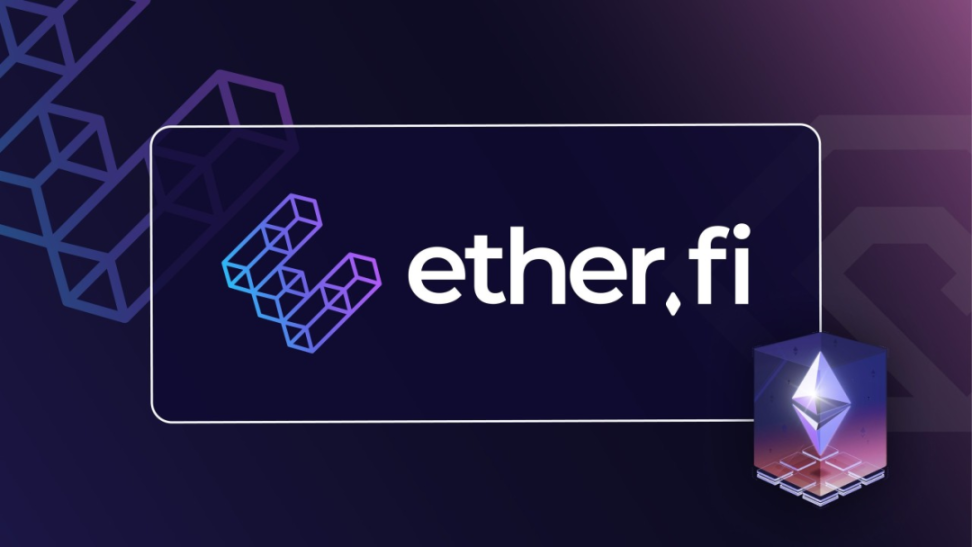
Built on a series of core principles, EtherFi aims to ensure the integrity and decentralization of the Ethereum ecosystem. These principles include decentralization, sustainability and ethical operation, as well as community focus. EtherFi introduces a complex system involving multiple stakeholders such as stakers, node operators, and node services, divided into three strategic stages: delegated staking, liquidity pool, and node services. Through its innovative design, EtherFi allows stakers to retain control of their keys, which is particularly prominent in the DeFi space.
In addition, EtherFi also introduces a Liquid Staking Token (LST), namely EETH, marking EtherFi's commitment to liquidity and flexibility.
2. Operation Principle
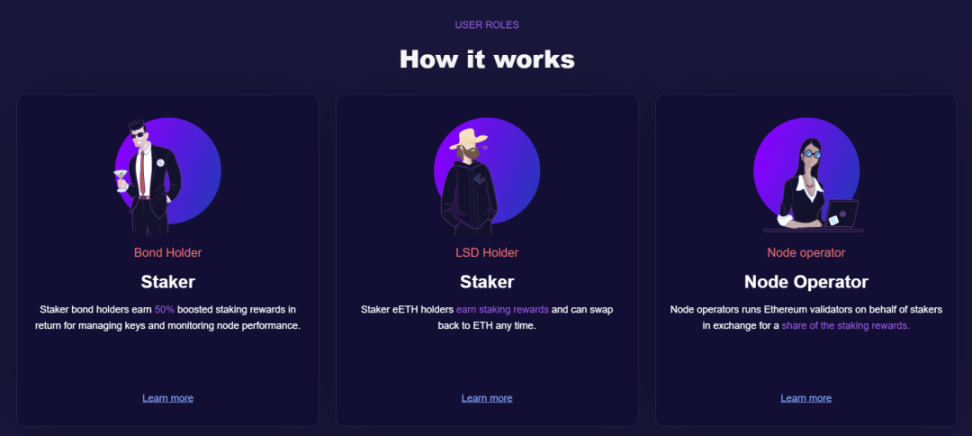
2.1 Phase One: Delegated Staking
In this phase, stakers can delegate staking in units of 32 ETH, achieved through the following steps:
- Node operator bidding: Node operators bid by submitting bids to indicate their ability to allocate validator nodes.
- Staking and auction mechanism: Stakers deposit 32 ETH into EtherFi's deposit contract, triggering the auction mechanism and assigning node operators to run the validator.
- Generation of NFTs and insurance mechanism: This process mints two NFTs (T-NFT and B-NFT), representing ownership of the withdrawal vault. B-NFT is unique and provides an insurance mechanism in case of issues with the validator.
- Key management and validator activation: Stakers encrypt validator keys and submit them as on-chain transactions, and node operators use the decrypted keys to activate the validator.
- Withdrawal command and fund recovery: Stakers or node operators can issue a withdrawal command, transferring the staked ETH to the withdrawal vault, and destroy the NFTs to retrieve their ETH (minus fees).
2.2 Phase Two: Liquidity Pool and eETH
This phase provides an opportunity for stakers with less than 32 ETH or those who do not wish to directly monitor validator nodes:
- Liquidity pool and asset blending: The liquidity pool contains ETH and T-NFTs, with ETH occupying a small proportion in the pool.
- Minting and burning eETH: When stakers deposit ETH into the pool, the pool mints eETH tokens and transfers them to the depositor. Stakers holding T-NFTs can also deposit them into the pool and mint an equivalent amount of eETH.
- Exchange of eETH and ETH: Stakers holding eETH can exchange it for ETH at a 1:1 ratio when there is sufficient liquidity.
2.3 Phase Three: Node Services
This is a prospective phase of the protocol, involving many undecided technical decisions:
- NFT and node services: Utilizing NFTs to create a programmable staking infrastructure layer, creating economic incentives for node operators and stakers.
- Registration and management of node services: Nodes can be registered to provide additional services, requiring the mutual agreement of node operators, B-NFT holders, and EtherFi.
3. Core Mechanism
3.1 Delegated Staking and Non-Custodial Control
EtherFi allows stakers to retain complete control of their Ethereum keys, a key feature that sets it apart from other staking protocols. In EtherFi, stakers not only send their ETH to the protocol, but through a special mechanism, ensure that they still control their assets throughout the process.
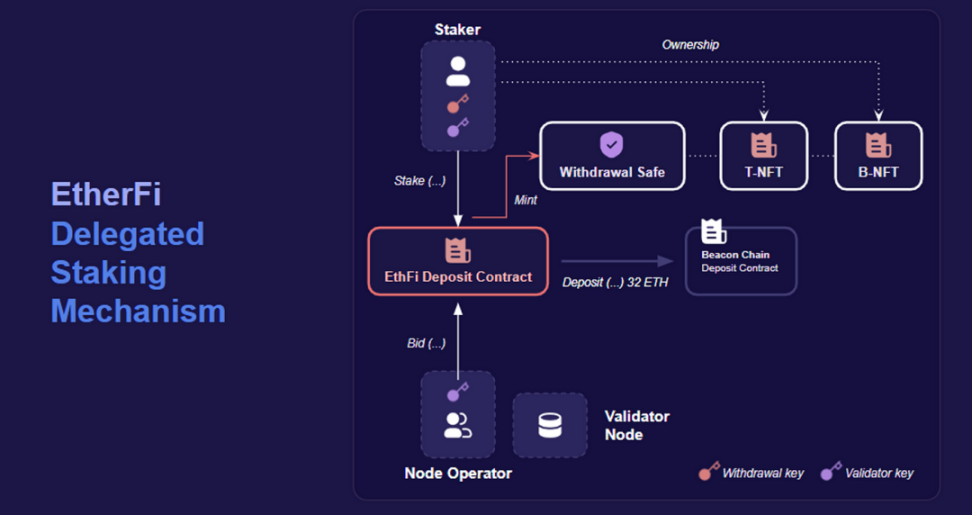
3.1.1 Delegated Staking
In EtherFi, delegated staking allows stakers to stake their Ethereum into the network to support the operation and security of Ethereum. However, unlike traditional staking methods, stakers do not need to deliver ETH to centralized node operators or staking pools. Instead, they delegate node operators to run the validator through EtherFi's protocol while retaining control of their assets. This reduces reliance on centralized entities, enhancing decentralization and security.
3.1.2 Non-Custodial Control
Non-custodial control is another key feature of EtherFi, ensuring that stakers always control their encrypted assets. In the EtherFi protocol, stakers' ETH never leaves their wallets or is transferred to a location outside the protocol's control. This is achieved through the use of smart contracts and encryption technology, where stakers generate and hold their private keys, and smart contracts securely handle staking operations without the need to transfer control.
3.2 NFT and Validator Management
In the EtherFi protocol, the combination of NFTs (non-fungible tokens) and validator management is one of its core innovations, greatly enhancing the flexibility and operability of Ethereum staking. By utilizing NFTs as a direct management tool for validators, EtherFi provides stakers with a transparent, verifiable, and decentralized management method.
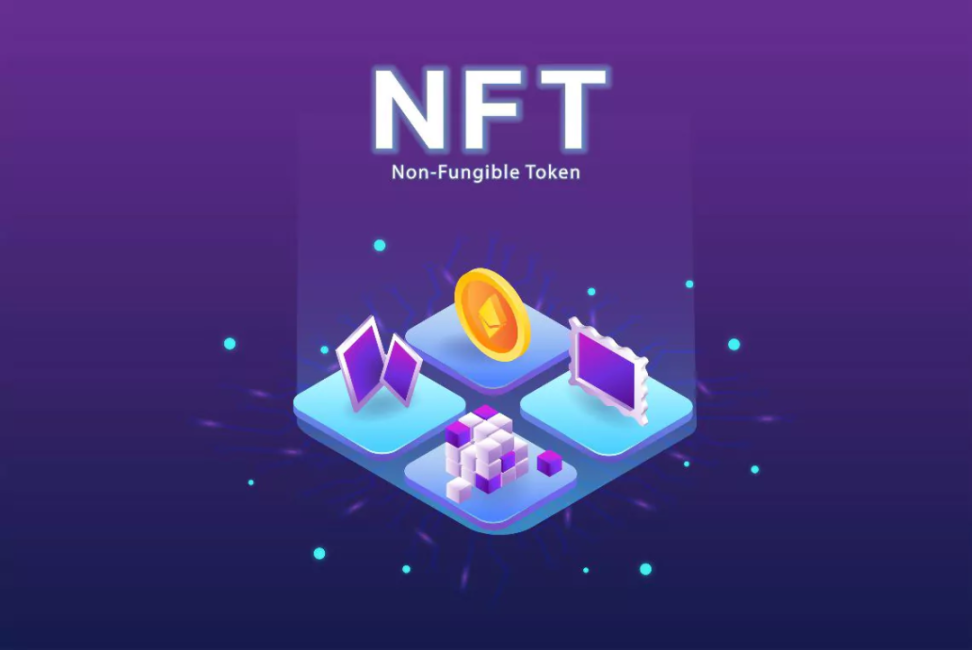
3.2.1 NFT-ization of Validators
In EtherFi, the creation of each validator is accompanied by the minting of a unique NFT. This NFT not only represents ownership of the staked funds on the validator but also contains all the key data required for managing and operating the validator.
NFT content:
- Validator information: including the node where the validator runs, physical location, node operator, and detailed information about node services.
- Management rights: NFT holders have control over the validator, including but not limited to the ability to start, stop, or reconfigure the validator.
- Staked ETH information: Each NFT is bound to a certain amount of ETH, typically 32 ETH, which is the standard staking amount required to start an Ethereum validator.
3.2.2 Decentralized Validator Management
Through NFTs, EtherFi allows stakers to manage their validators in a highly flexible and decentralized manner. This approach reduces the common trust issues in traditional staking services, as stakers do not need to transfer their ETH to a third party.
Operational process:
- Minting NFTs: When a staker decides to start a validator through EtherFi, the system automatically mints an NFT.
- Trading and transfer of NFTs: NFTs can be freely traded on the market, allowing the transfer of validator management rights from one staker to another without actually moving the ETH bound to the NFT.
- Dynamic management of validators: NFT holders can directly manage validators through smart contracts, such as changing node operators or adjusting validator configurations, all done through the held NFT.
3.2.3 Extended Uses of NFT
1. Project Introduction
EtherFi's NFT not only serves as a management tool but also acts as the foundation for a complex permission and management framework.
Functionality and Security:
- Verification and transparency: NFT provides a complete record of validator operations, increasing transparency and traceability of operations.
- Enhanced security measures: NFT can be used in conjunction with smart contracts, such as implementing automatic stop strategies for validators to address potential security threats.
- Integration of other services: Other decentralized services can be integrated into NFT, such as automatic restaking and yield optimization strategies.
- Through this innovative combination of NFT and validator management, EtherFi provides a more secure, flexible, and user-friendly staking solution, greatly enhancing users' control over their staked assets and bringing new possibilities to the Ethereum ecosystem.
3.3 Distributed Validator Technology (DVT)
In the EtherFi platform, Distributed Validator Technology (DVT) is a key innovative technology aimed at improving the management and operation of Ethereum validators. DVT allows multiple independent operators to jointly manage a validator, increasing the decentralization of the network and improving security and reliability.
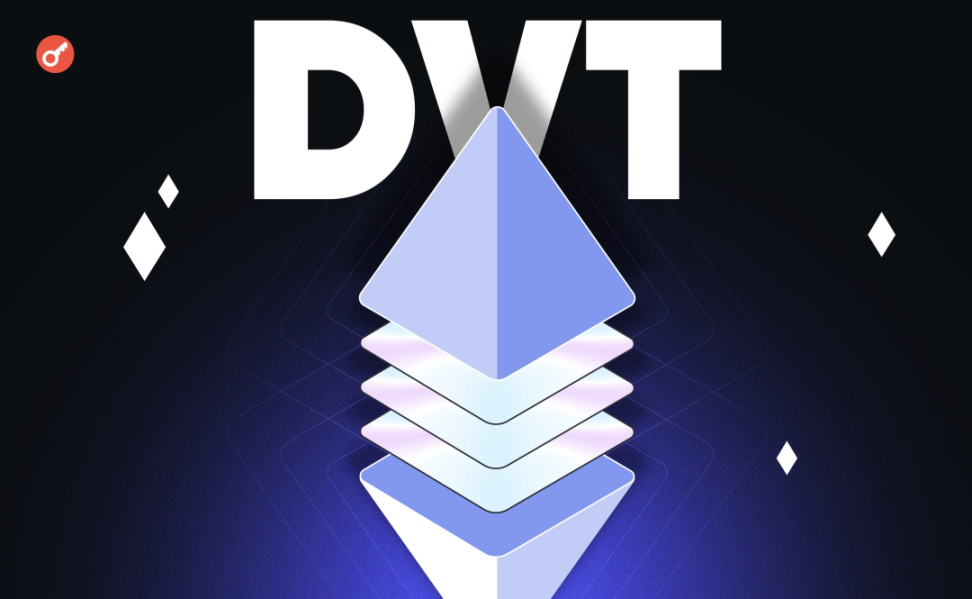
Here is a detailed introduction to DVT in EtherFi:
3.3.1 Core Concepts of DVT
In traditional Ethereum staking models, a validator is typically managed by a single node operator. This model may introduce centralization risks in certain situations, such as if the node operator is unreliable or under attack, which could affect the performance and security of the validator.
DVT disperses the risk of a single point of failure by allowing multiple independent entities to jointly manage a single validator. This approach has several key advantages:
- Enhanced security: By no longer relying on a single entity to control the validator, the risk of attack or abuse is reduced.
- Increased decentralization: The participation of multiple managers further decentralizes the network, aligning with the core principles of the Ethereum ecosystem.
3.3.2 Operation of DVT
- Key splitting: In DVT, the keys controlling the validator are split into multiple fragments, with each participating entity holding a portion. Critical operations, such as validator updates, withdrawals, or other key configuration changes, can only be performed when the majority or all fragments are combined.
- Consensus mechanism: Managers need to reach consensus among themselves to execute critical operations.
- Contracts and agreements: DVT participants typically have explicit contracts and agreements to regulate each person's responsibilities and rights, ensuring fairness and transparency of the entire system.
3.3.3 Implementation and Challenges of DVT
Implementing DVT faces some technical and operational challenges, including:
- Technical complexity: Implementing key splitting and consensus mechanisms requires high technical capabilities and precise execution.
- Coordination and cooperation: Coordinating and cooperating among multiple independent entities may pose challenges, especially when facing network consensus or emergency situations.
- Legal and compliance: Legal and regulatory requirements in different jurisdictions may impact the implementation of DVT, especially regarding regulations on fund and data protection.
4. ETHFI Token
The EtherFi token (ETHFI) is the native token of the EtherFi platform, with multiple use cases aimed at supporting decentralized staking and node operation activities on the platform.
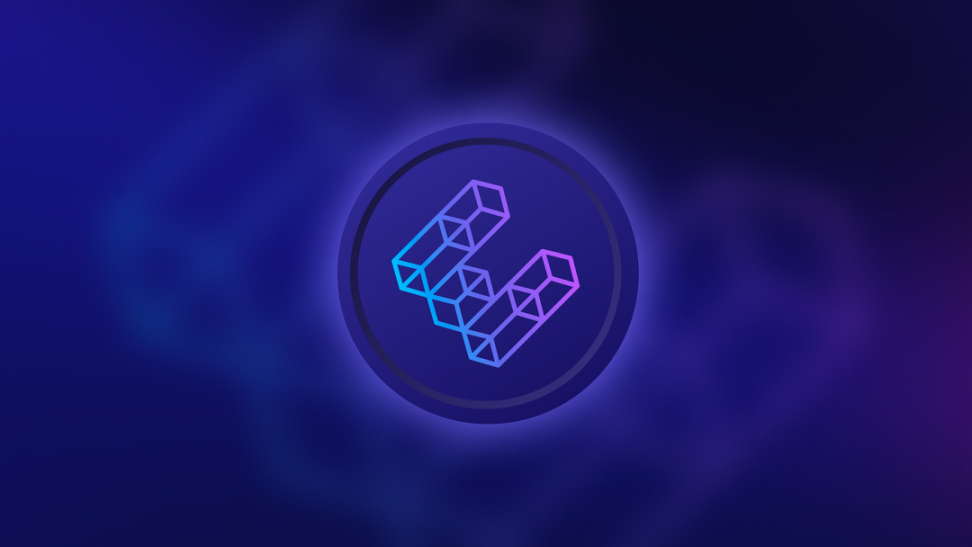
Here is a detailed introduction to the ETHFI token:
4.1 Token Functions and Uses
Paying protocol fees: ETHFI tokens are used to pay various protocol fees incurred when transacting and operating on the EtherFi platform.
Incentivizing stakers and node operators: The platform rewards users participating in staking and running nodes with ETHFI tokens, encouraging them to contribute to the security and stability of the network.
Governance voting: Users holding ETHFI tokens can participate in governance decisions on the platform, voting on key protocol updates and changes.
4.2 Token Distribution and Release
Total supply: The total supply of ETHFI is 1 billion tokens. The current circulating supply is 115,200,000 ETHFI, accounting for 11.52% of the total supply.
Public sale and private placement: EtherFi has conducted several rounds of private placements and public sales, attracting participation from top funds such as Arrington XRP Capital and Consensys.
Initial Exchange Offering (IEO): The ETHFI token underwent an IEO on Binance Launchpool, with 2% of the supply allocated to this event.
Token distribution: Investors and advisors: 32.5%, DAO treasury: 27.2%, Team: 23.3%, Funds: 11%, Liquidity: 3%, Binance Launchpool: 2%, Protocol Guild: 1%
Token Release
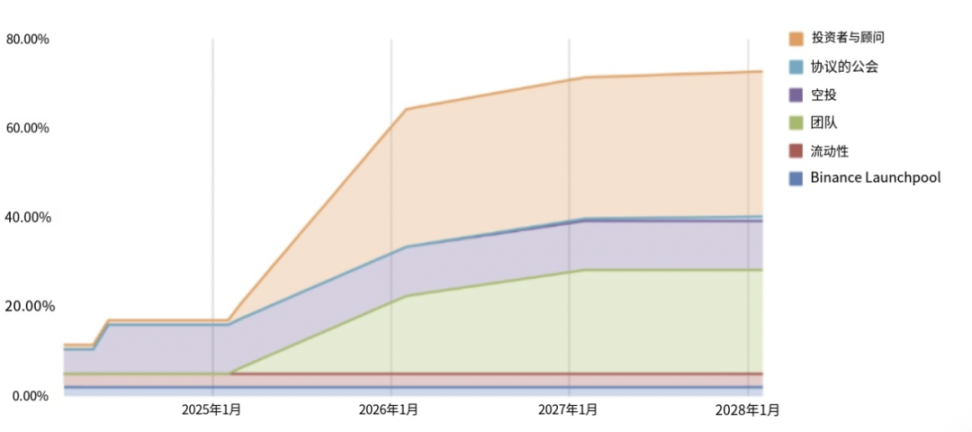
4.3 Security and Stability
Security audit: The EtherFi protocol and its smart contracts have undergone audits by multiple top security companies, including Certik and Zellic, ensuring the platform's security and reliability.
4.4 Governance and Future Plans
DAO governance: ETHFI token holders can participate in the decentralized autonomous organization (DAO) and influence the platform's development direction through voting.
Technical development: EtherFi plans to continue advancing technological innovations, including expanding its Distributed Validator Technology (DVT) and improving the openness and permission models of smart contracts.
4.5 ETHFI Airdrop
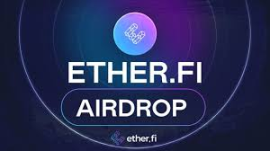
Airdrop overview: In the first season, users who minted EtherFan NFTs (priced at 0.01 ETH) received an airdrop of 430 ETHFI tokens, which were valued at approximately $36,000 at the time. Additionally, users staking EETH on EtherFi received additional token allocations. The second season has begun, and another airdrop to participating community members on Liquid has been announced.
Liquid platform: Liquid is an automated DeFi strategy vault that allows users to easily participate in the DeFi ecosystem using their EETH. Users simply deposit EETH, WEETH, or WETH, and the vault allocates these assets across multiple DeFi positions.
Ranking and loyalty points: StakeRank is a system with 8 levels, where users can advance one level for every 100 hours of staked ETH, with each level having an increasing rate of loyalty points. A staking balance of over 0.1 EETH is required to continue leveling up.
1. Project Introduction
EtherFi's NFT not only serves as a management tool but also acts as the foundation for a complex permission and management framework.
Functionality and Security:
- Verification and transparency: NFT provides a complete record of validator operations, increasing transparency and traceability of operations.
- Enhanced security measures: NFT can be used in conjunction with smart contracts, such as implementing automatic stop strategies for validators to address potential security threats.
- Integration of other services: Other decentralized services can be integrated into NFT, such as automatic restaking and yield optimization strategies.
- Through this innovative combination of NFT and validator management, EtherFi provides a more secure, flexible, and user-friendly staking solution, greatly enhancing users' control over their staked assets and bringing new possibilities to the Ethereum ecosystem.
3.3 Distributed Validator Technology (DVT)
In the EtherFi platform, Distributed Validator Technology (DVT) is a key innovative technology aimed at improving the management and operation of Ethereum validators. DVT allows multiple independent operators to jointly manage a validator, increasing the decentralization of the network and improving security and reliability.

Here is a detailed introduction to DVT in EtherFi:
3.3.1 Core Concepts of DVT
In traditional Ethereum staking models, a validator is typically managed by a single node operator. This model may introduce centralization risks in certain situations, such as if the node operator is unreliable or under attack, which could affect the performance and security of the validator.
DVT disperses the risk of a single point of failure by allowing multiple independent entities to jointly manage a single validator. This approach has several key advantages:
- Enhanced security: By no longer relying on a single entity to control the validator, the risk of attack or abuse is reduced.
- Increased decentralization: The participation of multiple managers further decentralizes the network, aligning with the core principles of the Ethereum ecosystem.
3.3.2 Operation of DVT
- Key splitting: In DVT, the keys controlling the validator are split into multiple fragments, with each participating entity holding a portion. Critical operations, such as validator updates, withdrawals, or other key configuration changes, can only be performed when the majority or all fragments are combined.
- Consensus mechanism: Managers need to reach consensus among themselves to execute critical operations.
- Contracts and agreements: DVT participants typically have explicit contracts and agreements to regulate each person's responsibilities and rights, ensuring fairness and transparency of the entire system.
3.3.3 Implementation and Challenges of DVT
Implementing DVT faces some technical and operational challenges, including:
- Technical complexity: Implementing key splitting and consensus mechanisms requires high technical capabilities and precise execution.
- Coordination and cooperation: Coordinating and cooperating among multiple independent entities may pose challenges, especially when facing network consensus or emergency situations.
- Legal and compliance: Legal and regulatory requirements in different jurisdictions may impact the implementation of DVT, especially regarding regulations on fund and data protection.
4. ETHFI Token
The EtherFi token (ETHFI) is the native token of the EtherFi platform, with multiple use cases aimed at supporting decentralized staking and node operation activities on the platform.

Here is a detailed introduction to the ETHFI token:
4.1 Token Functions and Uses
Paying protocol fees: ETHFI tokens are used to pay various protocol fees incurred when transacting and operating on the EtherFi platform.
Incentivizing stakers and node operators: The platform rewards users participating in staking and running nodes with ETHFI tokens, encouraging them to contribute to the security and stability of the network.
Governance voting: Users holding ETHFI tokens can participate in governance decisions on the platform, voting on key protocol updates and changes.
4.2 Token Distribution and Release
Total supply: The total supply of ETHFI is 1 billion tokens. The current circulating supply is 115,200,000 ETHFI, accounting for 11.52% of the total supply.
Public sale and private placement: EtherFi has conducted several rounds of private placements and public sales, attracting participation from top funds such as Arrington XRP Capital and Consensys.
Initial Exchange Offering (IEO): The ETHFI token underwent an IEO on Binance Launchpool, with 2% of the supply allocated to this event.
Token distribution: Investors and advisors: 32.5%, DAO treasury: 27.2%, Team: 23.3%, Funds: 11%, Liquidity: 3%, Binance Launchpool: 2%, Protocol Guild: 1%
Token Release

4.3 Security and Stability
Security audit: The EtherFi protocol and its smart contracts have undergone audits by multiple top security companies, including Certik and Zellic, ensuring the platform's security and reliability.
4.4 Governance and Future Plans
DAO governance: ETHFI token holders can participate in the decentralized autonomous organization (DAO) and influence the platform's development direction through voting.
Technical development: EtherFi plans to continue advancing technological innovations, including expanding its Distributed Validator Technology (DVT) and improving the openness and permission models of smart contracts.
4.5 ETHFI Airdrop

Airdrop overview: In the first season, users who minted EtherFan NFTs (priced at 0.01 ETH) received an airdrop of 430 ETHFI tokens, which were valued at approximately $36,000 at the time. Additionally, users staking EETH on EtherFi received additional token allocations. The second season has begun, and another airdrop to participating community members on Liquid has been announced.
Liquid platform: Liquid is an automated DeFi strategy vault that allows users to easily participate in the DeFi ecosystem using their EETH. Users simply deposit EETH, WEETH, or WETH, and the vault allocates these assets across multiple DeFi positions.
Ranking and loyalty points: StakeRank is a system with 8 levels, where users can advance one level for every 100 hours of staked ETH, with each level having an increasing rate of loyalty points. A staking balance of over 0.1 EETH is required to continue leveling up.
5. Team / Partners / Funding Situation
5.1 Team
The EtherFi team consists of several professionals in the blockchain and decentralized finance fields.
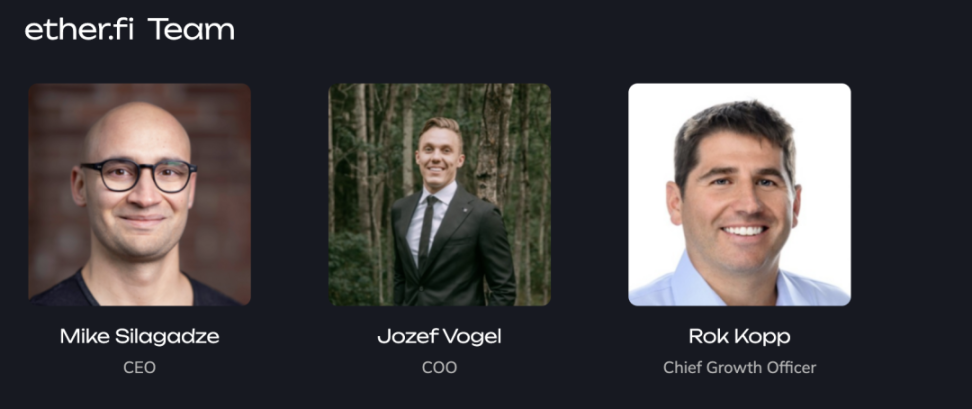
Mike Silagadze (Founder, CEO): Mike has been investing in cryptocurrencies since 2010 and previously founded Top Hat. He holds a bachelor's degree from the University of Waterloo.
Chuck Morris (Vice President, Chief Engineer): Chuck has been leading and managing engineering teams for over a decade. He holds a master's degree in computer science from the University of Chicago.
Rok Kopp (Director of Customer Success): Rok holds a bachelor's degree from the University of Notre Dame and has over a decade of experience in sales and marketing for startups.
5.2 Partners
EtherFi has established partnerships with various entities, including:
- Kiln: Provides infrastructure services for Ethereum, such as node operation or staking solutions.
- DSRV: A company providing blockchain infrastructure support, including node services and other technical support.
- Chainnodes: A blockchain service provider focused on node operation and management.
- Obol: A company focused on distributed trust protocols or decentralized technologies related to blockchain.
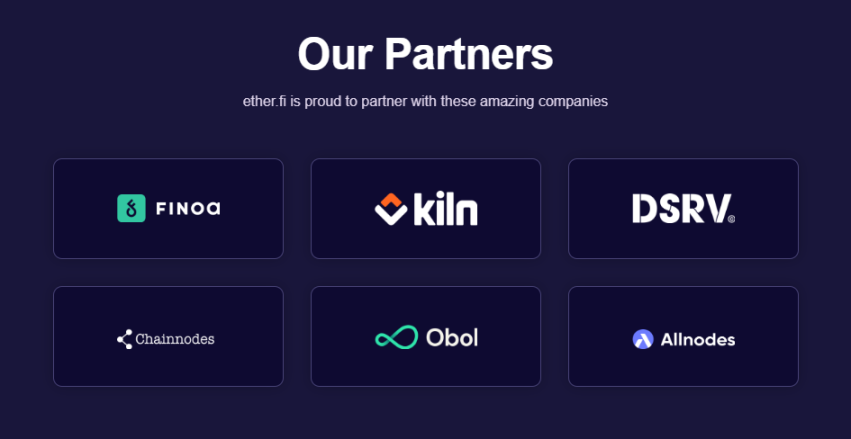
5.3 Funding Situation
EtherFi has achieved significant growth through multiple rounds of funding.
Initially, the company completed a $5.3 million funding round, led by North Island Ventures, Chapter One, and Node Capital, with participation from notable individuals such as BitMex founder Arthur Hayes.
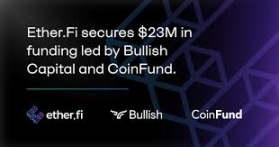
Subsequently, EtherFi successfully raised $23 million in a Series A funding round led by Bullish Capital and CoinFund, with participation from other investors such as OKX. This capital injection greatly facilitated EtherFi's operations, allowing it to expand its services and strengthen its platform. The Series A funding increased the company's capital base from $103 million to $1.66 billion, marking a significant growth in its financial and operational scale. These developments highlight EtherFi's robust position in the decentralized finance (DeFi) space and its continued appeal to investors seeking opportunities in the blockchain and cryptocurrency fields.
6. Project Evaluation and Analysis
6.1 Track Analysis
The EtherFi project falls within the staking and liquidity staking sector of decentralized finance (DeFi). This sector focuses on providing decentralized staking services, particularly allowing Ethereum holders to earn rewards from their assets through staking ETH without sacrificing liquidity. It enables users to stake their ETH to support the network operation and earn staking rewards while issuing corresponding tokens to maintain the liquidity of staked assets.
EtherFi primarily targets cryptocurrency holders who want to earn returns from their assets through staking mechanisms without sacrificing liquidity. By providing non-custodial liquid staking solutions, EtherFi attracts individual and institutional investors interested in decentralized and scalable financial solutions.
Similar projects to EtherFi include:
- Lido Finance, which provides liquidity solutions for ETH2.0 staking.
- Rocket Pool, another decentralized Ethereum staking network that allows users to stake with smaller amounts of ETH.
- Stakewise, which offers decentralized Ethereum staking services, allowing users to earn staking rewards.
- Ankr Staking, providing a liquidity staking service for users to stake their crypto assets and earn returns.
- Marinade Finance, a platform offering similar services for the Solana blockchain.
6.2 Project Advantages
High Total Value Locked (TVL): Having a TVL of $300 million indicates strong market recognition for EtherFi and a significant amount of funds locked in the platform. A high TVL typically signifies an active user base, strong fund attraction, and stable liquidity.
Low token inflation rate: Maintaining a low inflation rate (0.46%) in the first year after Token Generation Event (TGE) helps maintain price stability, which is attractive to early investors and token holders as it reduces dilution risk.
Low FDV/Initial Market Value ratio: The ratio of fully diluted market value (FDV) to initial market value is 11.52%, indicating that even if all tokens enter the market circulation, the increase in market value is manageable. A lower FDV/market value ratio may reassure new investors as it implies a reasonable upper limit to future token price fluctuations.
Strong marketing and PR performance: Robust market growth strategies and PR activities demonstrate EtherFi's excellent performance in expanding market influence and increasing brand awareness.
Experienced team: An experienced team typically signifies better execution and a higher probability of success for the project, as team members may have valuable experience and resources accumulated in related fields.
Security audits: Security audits conducted by top companies enhance the project's credibility, providing users with a secure staking and trading environment, which is particularly important in the DeFi space.
Support from top funds: Support from top funds not only provides necessary financial resources but also brings networks and expertise, which is especially important for startups.
6.3 Project Disadvantages
1. Weak Marketing Infrastructure and SEO Performance:
2. Token Inflation Rate in the Second Year After TGE is Quite High:
A high inflation rate may lead to token value dilution, which could have adverse effects on long-term holders. High inflation may also undermine investor confidence, especially if the inflation is not rationalized through substantial project progress or revenue growth. EtherFi needs to clearly communicate the reasons for inflation and its management strategy to ensure the community understands and supports its token policy.
3. Lack of Transparency in Token Economics:
If investors and users cannot easily access information about token pricing, allocation, and ownership conditions, it may negatively impact the project's trust and attractiveness. Transparency is a key factor in building investor and community trust. Lack of transparency may lead to insufficient investment decisions and decreased market participation. EtherFi can enhance transparency and credibility by providing detailed token economic whitepapers, regular updates, and public Q&A sessions.
To address these drawbacks, the EtherFi team may need to make some strategic adjustments, including strengthening its marketing and public relations activities, reassessing its token economic model to better manage inflation, and increasing the overall transparency of the project to ensure long-term sustainability and community support.
7. Conclusion
Looking ahead, EtherFi has several potential development directions:
- Technical and product iteration: With the development of blockchain and DeFi technology, EtherFi needs to continuously update and optimize its products to remain competitive. This includes improving its liquidity restaking protocol and increasing integrations with other DeFi projects and protocols.
- Enhanced marketing and user education: To expand its user base and market share, EtherFi needs to strengthen its marketing strategy, increase brand awareness, and project visibility. Additionally, the project should provide more education to users to help them understand the project's advantages and operations.
- Addressing regulatory challenges: With increasing global regulation of DeFi, EtherFi may need to adapt to changes in relevant regulations to ensure the compliance of its operations.
- Collaboration and ecosystem expansion: Through partnerships with other DeFi projects and traditional financial institutions, EtherFi can further expand its ecosystem, increase user and fund inflows, and enhance the market adaptability and attractiveness of its products.
In conclusion, despite facing challenges, EtherFi has the potential to achieve long-term success in the DeFi space and become a leader in staking services, thanks to its innovative solutions and strong team background. Through continuous technological innovation and strategic adjustments, EtherFi is poised to occupy a significant position in the future blockchain staking market.
免责声明:本文章仅代表作者个人观点,不代表本平台的立场和观点。本文章仅供信息分享,不构成对任何人的任何投资建议。用户与作者之间的任何争议,与本平台无关。如网页中刊载的文章或图片涉及侵权,请提供相关的权利证明和身份证明发送邮件到support@aicoin.com,本平台相关工作人员将会进行核查。




